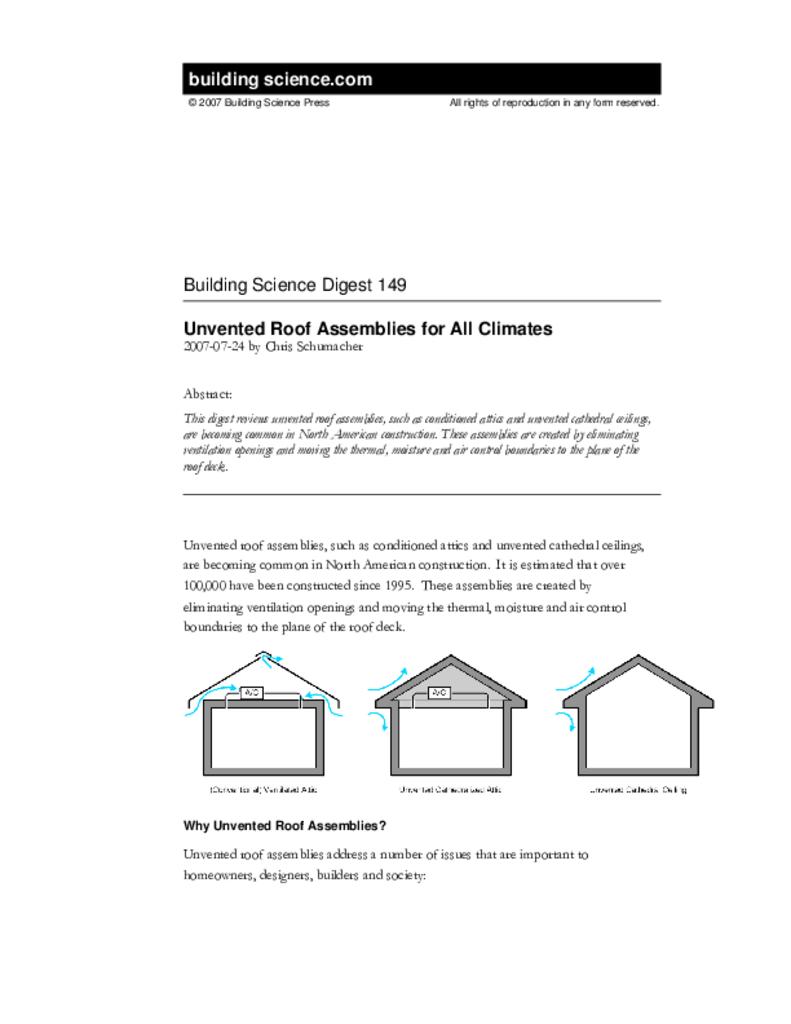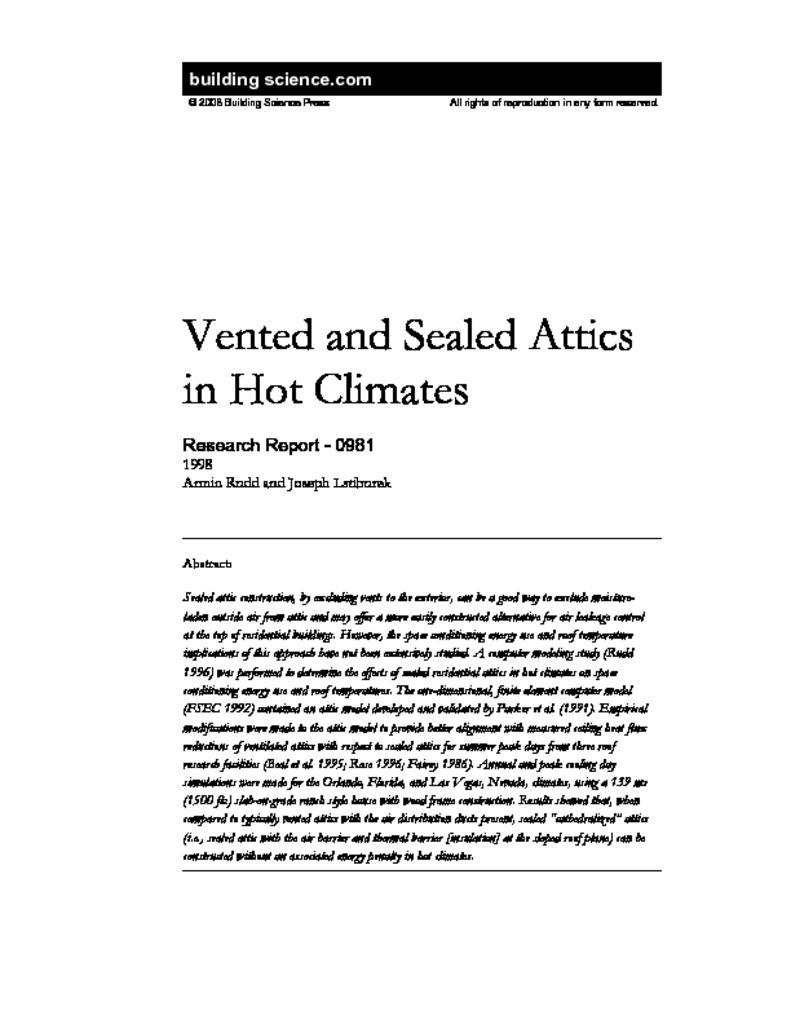If you convert your vented unconditioned attic to an unvented conditioned attic by installing open cell spray foam on the underside of your roof sheathing you may be surprised to discover.
Unvented attics in hot humid climates.
The roof deck in an unvented attic must be exceptionally airtight.
Not venting the attic avoids this problem.
High humidity in unvented conditioned attics.
In theory if you install a small exhaust fan in the gable wall of an unvented attic along with a passive duct or grille that allows conditioned air from the floor below to enter the attic as makeup air the humid air in the attic will be exhausted and will be replaced with less humid air from the home.
What is less well understood is that venting causes many problems in cold dry climates as well.
In predominantly hot humid climates attics sealed to outside air exchange would correct this problem.
The hotter the air the more moisture i e.
Fibrous insulation e g batt or blown in can be installed under the roof deck in the hot dry climate zone but this will cause moisture problems in all other climates straube and grin 2010.
Absolute humidity the air space can hold.
Insulation approaches for unvented attics vary by climate.
Install insulation along the underside of the roof deck of an unvented attic rather than on the ceiling deck of a vented attic for either of two reasons.
Even when outside air is hot and humid if the attic space is air sealed from the interior it is much hotter than outside air.
Due to night sky radiation the metal roof or radiant barrier temperature can be depressed below the attic air dew point temperature allowing condensation and possible water damage to ceiling materials to occur.
To provide an unvented conditioned space for locating hvac equipment in the attic and or to provide a continuous thermal barrier for designs that have complex coffered ceiling planes and or numerous penetrations for lights speakers vents soffits etc which make it difficult to achieve an airtight ceiling plane.
Therefore replacing the hotter attic air with cooler outside air even at a considerably higher relative humidity rh tends to dry the space minimizing the potential for condensation.
The main strategy that should be utilized when designing roof or attics to be free from moisture problems and ice dams along with control of heat gain or heat loss regardless of ventilation approach is the elimination of air movement particularly exfiltrating air in cold climates and infiltrating air in hot and hot humid climates.




























